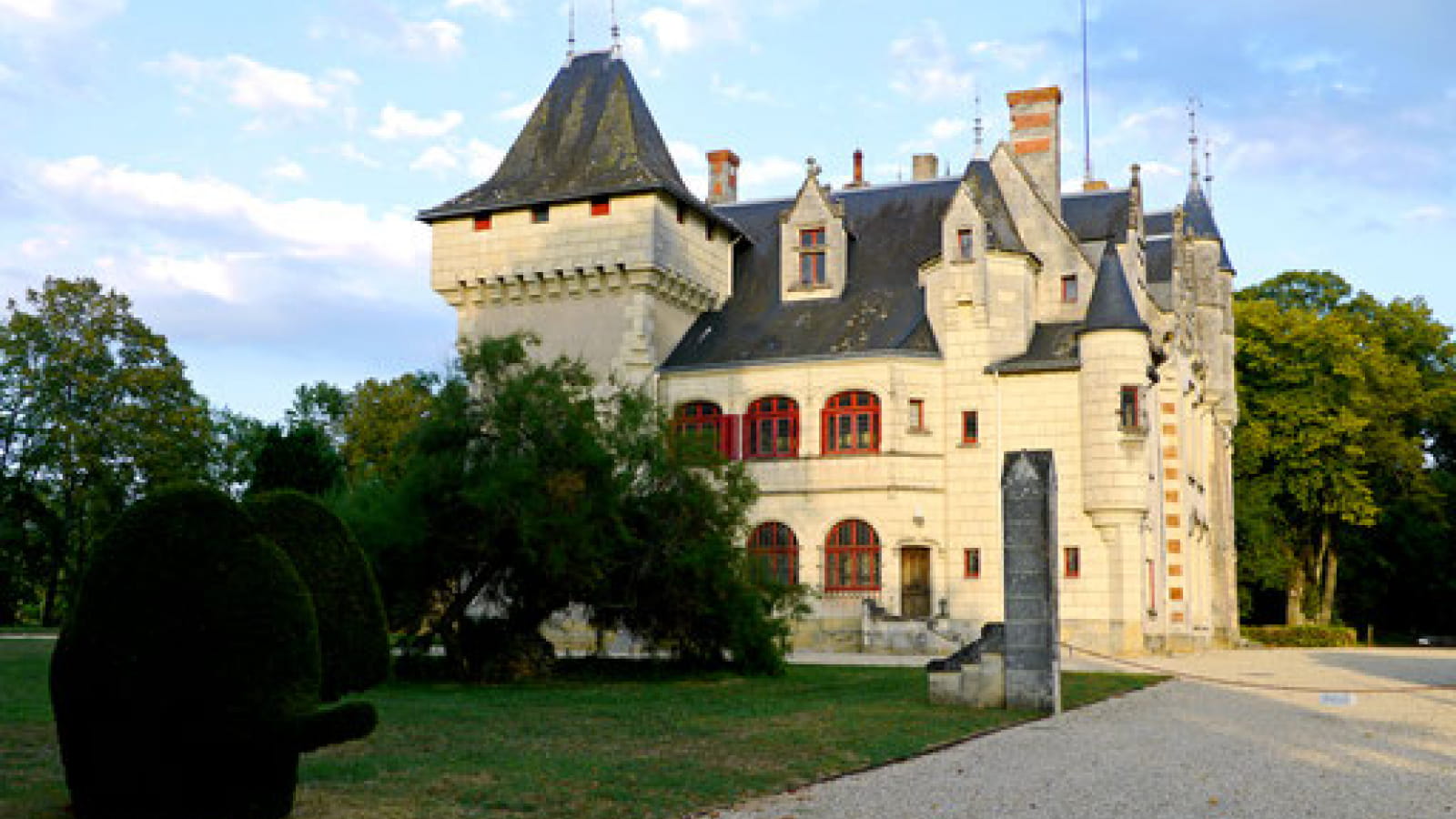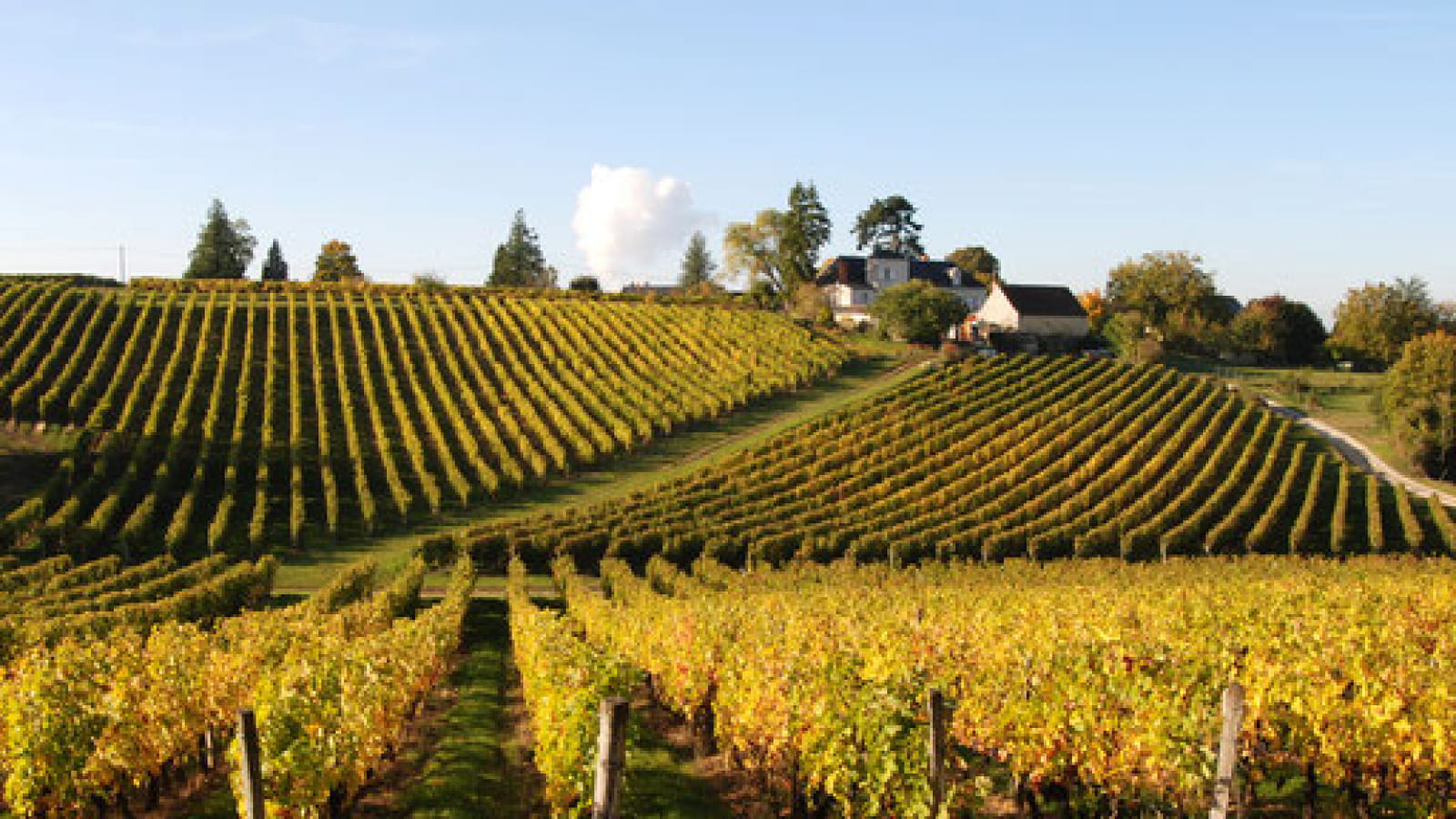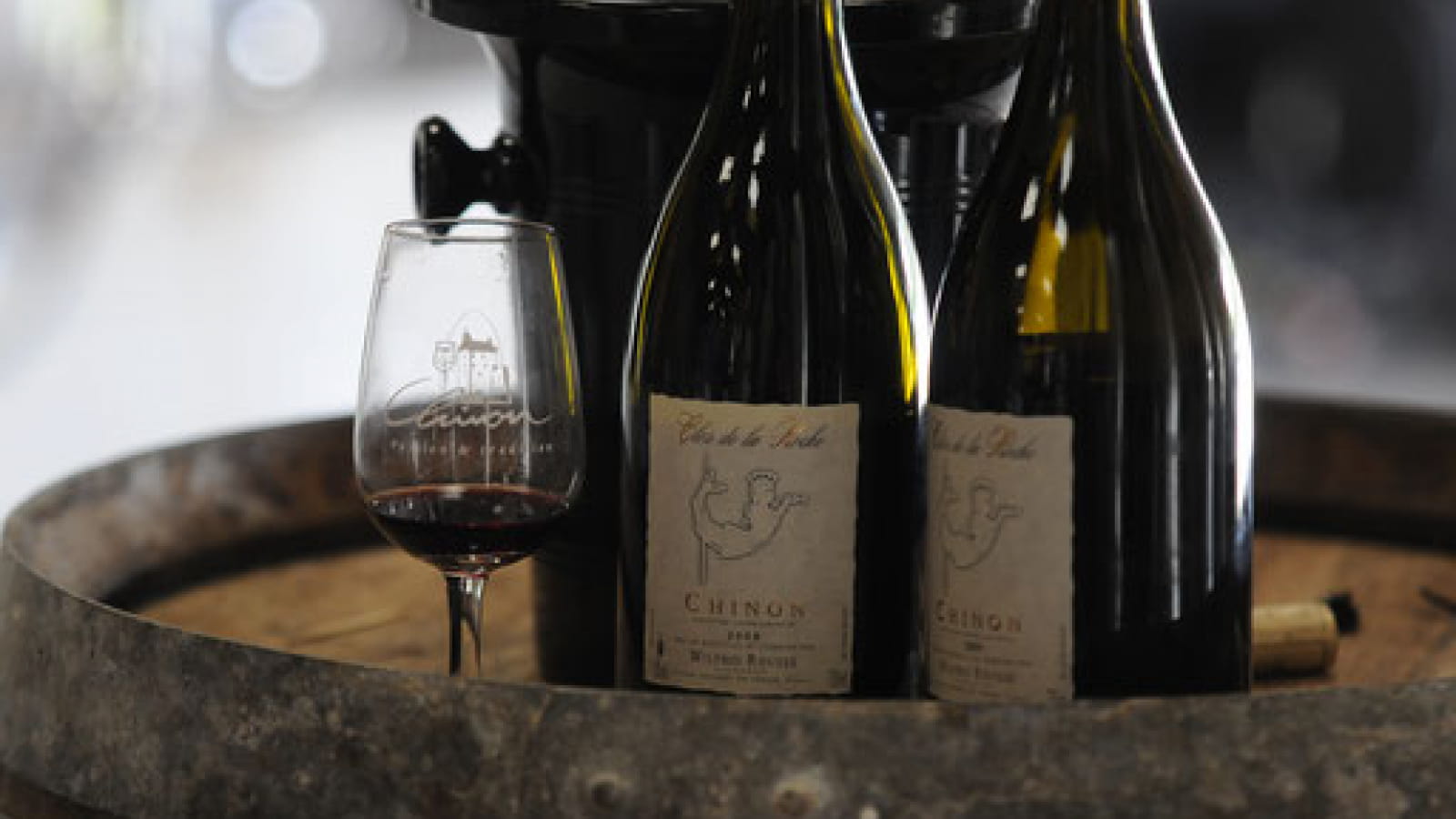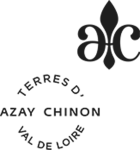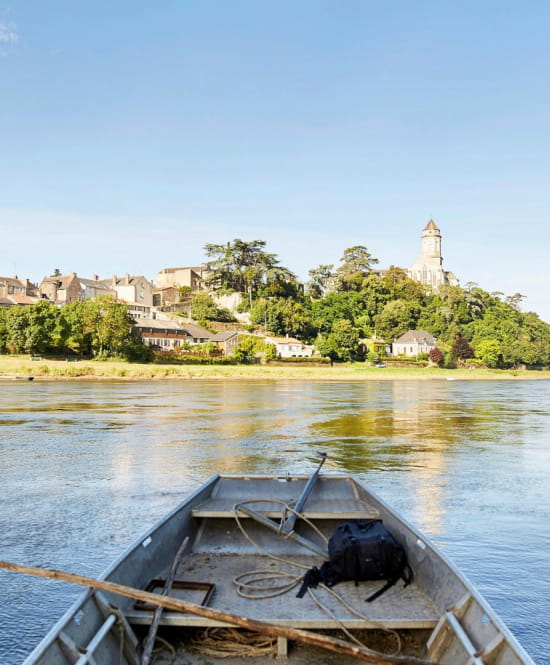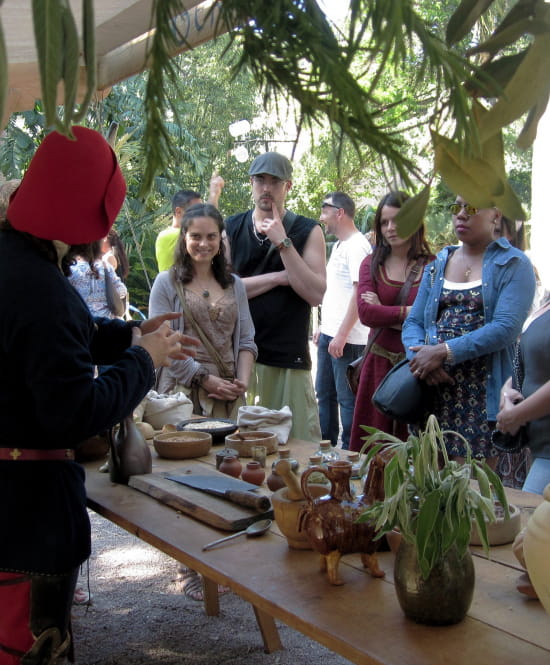The Chinon wine area
Chinon and a large part of its wine region are listed as exceptional cultural landscapes by UNESCO. This is your chance to try the wines of Chinon or the smaller, less well-known designated wines, such as Touraine-Azay-le-Rideau and Touraine-Noble-Joué. An essential taste experience!
An introduction to Chinon wine
The Chinon wine region covers both the left bank of the Loire and either side of the River Vienne. It is represented by 200 winemakers producing 11 million bottles a year.
The AOC Chinon wine soils
The red wines are made on 2,300 hectares in and around Chinon. The local areas with the right to produce the designated Chinon wine (AOP) include Beaumont-en-Véron, Avoine, Savigny and Ligré.
Chinon wine is produced on light soils made up of sand and gravel from the banks of the River Vienne and the Loire. When Chinon wine is made on the firmer soils on the clay-limestone hills with a tuffeau stone subsoil, they are more full bodied and can be laid down for longer.
The grape varieties: Cabernet Franc or Chenin Blanc
Chinon, a major Loire valley wine, is made from the Cabernet Franc grape variety. This is the king of grape varieties in Chinon wines. It is also known as Cabernet Breton, in homage to Rabelais, who mentions it in his work Gargantua as a”a good Breton wine, which is not at all made in Brittany, but in the fine old lands of Véron”.
The silky, deep robe announces a ruby red wine, both generous and supple with a characteristic bouquet of violet. Cabernet Sauvignon can also be added as a secondary grape variety.
Chinon wines are mainly red, but the region also produces an excellent dry, light rosé with a very pleasant aroma. White Chinon wines are rarer and are made only from Chenin grapes. They have a fragrance with mineral notes.
Where to taste Chinon wine
The public can taste Chinon wines at a wide range of wine cellars.
Some cellars are of interest both in terms of wine and sightseeing. These include the troglodytic caves of Chinon and the sculpted caves of Panzoult.
Wine estates with the Caves touristiques du vignoble de Loire® label (Loire Wine Cellars) guarantee a high-quality welcome, regular opening times, a free tasting with commentary in an adapted setting and with bottles sold individually.
The restaurants in the Vignobles & Découvertes Chinon-Bourgueil-Azay network serve a selection of Chinon wines, as well as lesser known wines, such as Touraine-Azay and Noble-Joué.
Make sure you try an Azay-Chinon wine with the excellent Sainte-Maure de Touraine goat’s cheese or the delicious poire tapée de Rivarennes (a local dried pear speciality).
Two rising stars in Touraine
Two designated areas are relatively little known but have a strong character to delight fans of Touraine wine. Azay-le-Rideau and Noble-Joué wines are produced by a handful of winemakers in the Loire valley in the Touraine Protected Designation of Origin (PDO: AOC in French).
Touraine-Azay-le-Rideau AOC wines
The Azay-le-Rideau wine area extends along the Indre valley between Montbazon and the River Loire. Nine winemakers near the Château d’Azay-le-Rideau produce dry white wines and fine, elegant rosés.
The Chenin grape variety is used for white wines and Gamay, Grolleau, Cabernet Franc, Cabernet Sauvignon and Côt for rosé wines. The annual yield of these delicate wines is less than 150,000 bottles a year.
Touraine-Noble-Joué AOC wines
The Noble-Joué is the smallest AOC wine in the Loire valley. It is mainly located in the commune of Esvres-sur-Indre. The wine region has been reborn after almost completely disappearing in the 1940s.
Today the Noble-Joué wine area has just five winemakers producing a rosé made from Pinot Meunier, Pinot Gris and Pinot Noir. Since 2015, Malvoisie has been a new reference in sweet white wines with a very delicate taste and a sweet aroma of pears.


